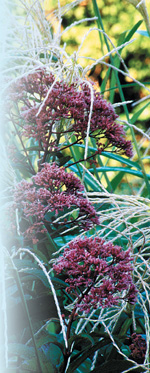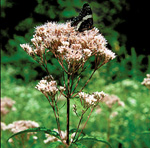Reach the Sky With Joe-Pye
go.ncsu.edu/readext?236322
en Español / em Português
El inglés es el idioma de control de esta página. En la medida en que haya algún conflicto entre la traducción al inglés y la traducción, el inglés prevalece.
Al hacer clic en el enlace de traducción se activa un servicio de traducción gratuito para convertir la página al español. Al igual que con cualquier traducción por Internet, la conversión no es sensible al contexto y puede que no traduzca el texto en su significado original. NC State Extension no garantiza la exactitud del texto traducido. Por favor, tenga en cuenta que algunas aplicaciones y/o servicios pueden no funcionar como se espera cuando se traducen.
Português
Inglês é o idioma de controle desta página. Na medida que haja algum conflito entre o texto original em Inglês e a tradução, o Inglês prevalece.
Ao clicar no link de tradução, um serviço gratuito de tradução será ativado para converter a página para o Português. Como em qualquer tradução pela internet, a conversão não é sensivel ao contexto e pode não ocorrer a tradução para o significado orginal. O serviço de Extensão da Carolina do Norte (NC State Extension) não garante a exatidão do texto traduzido. Por favor, observe que algumas funções ou serviços podem não funcionar como esperado após a tradução.
English
English is the controlling language of this page. To the extent there is any conflict between the English text and the translation, English controls.
Clicking on the translation link activates a free translation service to convert the page to Spanish. As with any Internet translation, the conversion is not context-sensitive and may not translate the text to its original meaning. NC State Extension does not guarantee the accuracy of the translated text. Please note that some applications and/or services may not function as expected when translated.
Collapse ▲
Joe-Pye Weed
Photo by Robert E. Lyons
Joe-Pye weed, Eupatorium spp., is a conspicuous late summer bloomer that grows naturally in wet or damp meadows, thickets and along roadsides. Luckily, it’s a natural for gardeners. A showy plant, few perennials can compare with Joe-Pye weed’s ability to create an imposing presence in the landscape. A member of the aster family, the plant is sometimes called feverweed, queen of the meadow and numerous other common names.
A tall wildflower, the unbranched stems of Joe-Pye weed usually grow 5 to 6 feet, but under good conditions can reach heights of 10 to 12 feet. Its large, rounded clusters of pink-purple fuzzy flower heads, large size and whorled leaves that come out from the stem like the spokes of a wheel make it easy to recognize. The showy flower clusters are invariably covered by a variety of insects including butterflies, bees and various wasps feeding on the sweet nectar.
In the garden, Joe-Pye performs best in full sun and moist soil, though the plant is tolerant of a wide range of soil types and moisture levels and is even considered drought-tolerant once established. Propagate by division.

Joe-Pye Weed
Photo by Robert E. Lyons
Several Joe-Pye weed cultivars are available, including E. purpureum ssp. maculatum ‘Atropurpureum.’ At up to 9-feet high, this Joe-Pye stands up for attention. Its purple spotted and mottled stems don’t require stakes and it makes a great show at the back of a border with its violet-purple flowers.
Eupatorium purpureum ssp. maculatum ‘Gateway,’ at 4- to 5-feet tall, is more compact and bushy. ‘Gateway’ has graceful, dusky rose-pink flower heads in summer and fall. The stems are wine-colored and put out large green leaves. ‘Alba’ produces white flowers.
Joe-Pye weeds are easy to spot at the JC Raulston Arboretum. Stroll the sidewalks that edge the long Perennial Border and the shorter opposing Elizabeth Lawrence Border. Grab a map at the end of the border to help you identify the plants, but Joe-Pye will stand out for sure!
Royce Hardin


